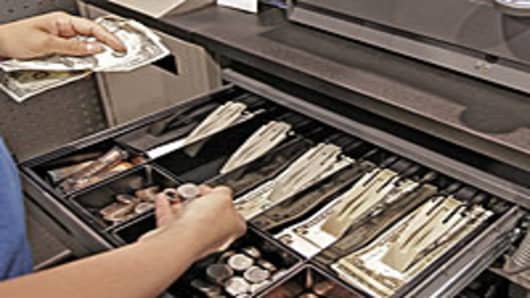The first quarter is now behind us and as retail earnings start to trickle out, the S&P retail index is hitting new highs.
Correct me if I am wrong but last time I heard the consumer was still under quite a bit of pressure. Sure there is some incremental good news, but I am not quite ready to start worrying about finding a parking space at the local mall.
Oil prices have been weak and some expect gas prices to come down by as much as $0.50 by the high mileage summer months—but an average price of $3.50 per gallon won’t have consumers dancing in the streets.
Cotton prices have also come down in the past month after more than doubling in the past year.
If that trajectory continues we may see some retail price relief into 2012, but let’s face it retail prices are going one way—up in the second half of 2011.
We have already heard from a laundry list of companies talking raising prices in the past few months: The Jones Group, American Eagle, Abercrombie & Fitch, Cadbury, Starbucks, Haines Brands, Ralph Lauren and the list goes on.
Now we have fresh data points from retailers reporting Q1 reminding us of this unfortunate fact. However, when it comes to passing on price increases not all retailers are created equal.
Thursday Kohl’s reported comps increased 1.3 percent, largely due to the growth in ecommerce. Disappointing sales were blamed on yes, uncooperative weather— we will no doubt hear more about the weather next week from Home Depot and Lowe’s.
The company cited weak apparel but at the same time made it clear that inflation in the category is “real” with product costs already up low single digits and heading to a 10-15 percent increase in the back half of the year. Price increases in the high singles to low double digits resulted in lower single digit percent unit sales.
Despite further Fall price increases across the store, Kohl’s is still optimistic that pent up demand for apparel and a ramp in private and exclusive brands will kick in and help drive comps of 2-4 percent for Q2. Only time will tell.
Gildan Activewear (sells socks, underwear and active wear products to mass market/regional retailers) reported results Wednesday and also provided a reminder that price increases are not over. The company cited a 5 percent increase in prices in the most recent quarter and more on the way in Q2.
Not everyone is so worried about price inflation: Macy’s management suggested concerns are “overstated” on this week’s conference call. Most of the pricing tests have gone “ok” so far.
The reality is Macy’s should be feeling very comfortable as one of the first retailers out of the box for with a blow out quarter, a raise to both sales and earnings guidance as well as a doubling of the dividend.
With all the concern surrounding price elasticity there is a group of retailers that are simply differentiated enough to get away with price hikes.
In addition to Macy’s, Limited Brands (reports May 19) is an obvious choice. The company posted 15 percent comps for Q1 and that performance is a direct result of newness and product innovation. For example, Bath & Body Works has two times new product in 2011 versus last year. Not a coincidence that price increases are being met with little notice and merchandise margins are actually flat to up.
We certainly won’t expect to see similar results from the Gap (also reports on the 19th) where lack of differentiated product should provide a major challenge to passing on input costs.
No wonder higher costs are already beginning to weigh on margins.
Stacey Widlitz is currently an independent retail analyst. She spent 12 years on the sell-side, most recently as a Managing Director at Pali Capital. Prior to that she was a Senior Analyst with Fulcrum Partners and UBS



